
Rail Transit and COVID-19, Two-Year Mark
Written by David Peter Alan, Contributing Editor
It has now been two years since we felt the impact of the COVID-19 virus and our lives changed, possibly forever. Ironically, the news came on Friday the 13th: the day that millions were told that we would all need to wear masks, classroom education would cease and “virtual” learning would take its place, and many jobs would terminate immediately. Some older workers found themselves “retiring” on the spot, whether they liked it or not. The virus had its effects on our trains and our transit, too. Ridership plummeted everywhere, and service was curtailed.
Here at Railway Age and its sibling publications, our editors and reporters got together to provide team coverage of everything that was happening on the rails, on a global basis. We covered passenger and freight railroads and rail transit everywhere. It was a busy time for all of us, as news came in continuously and we brought it to you on a daily basis.
While the virus has taken nearly one million American lives and millions more around the world, the situation has improved; at restricted speed, in railroad parlance. A year ago, we could finally get the shots that have protected many of us. The recovery has had its ups and downs, but we can finally hope for a time when many aspects of life will return to what we considered “normal” until two years ago.
Staffing problems due to the Omicron strain of the virus caused cancellations and service cuts during the recent winter, but transit schedules in most places appear to be coming back to immediately-previous levels (not Amtrak’s or VIA Rail’s, but more about that in another article). If the next strain or future strains of the virus affect employees as Omicron did, however, anything can happen.
That having been said, does the hope of the “old normality” hold for our trains and our transit? That is unclear, especially on regional commuter railroads, even though service on many transit systems has inched upward as the months have gone by. Amtrak and VIA Rail have not recovered their pre-COVID service levels, and neither have many commuter railroads and local transit providers.
Over the past two years, we have taken snapshots of where trains and transit in the U.S. and Canada have stood, in terms of service. We checked every six months, and this is the fourth such article. As we observe the second anniversary of that infamous Friday the 13th, we find our trains still struggling to recover, although local rail transit is running at or near pre-COVID levels almost everywhere, despite decreased ridership.
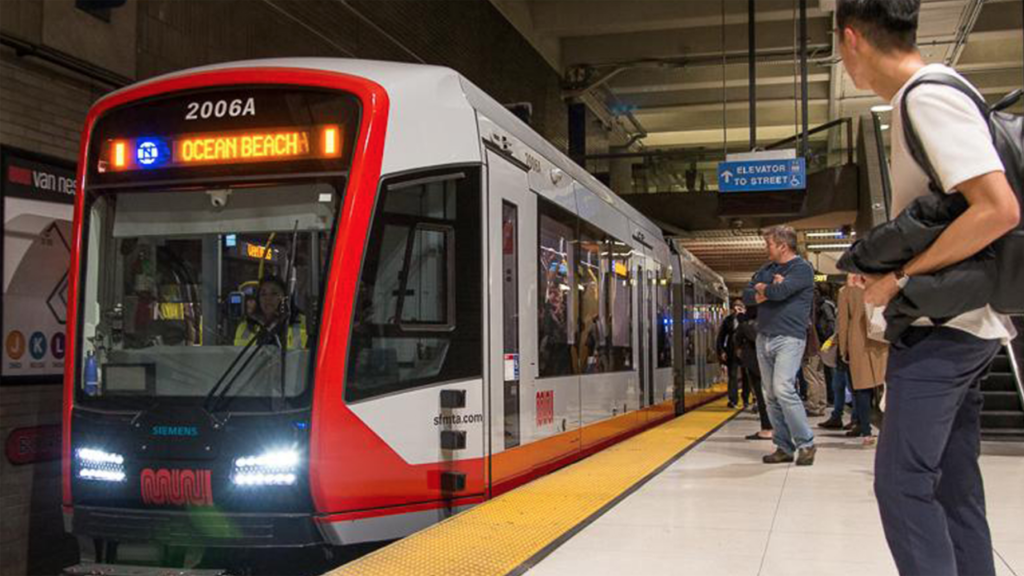
On Transit, Everything Is Local
A half-century ago, Thomas “Tip” O’Neill, the legendary Speaker of the House who hailed from the Boston area, famously said that “All politics are local.” Today, we can paraphrase him and say “All transit is local”—that how a particular transit system is doing depends on local circumstances and the decisions made by local politicians or local managers.
We checked the websites for all of the agencies in the U.S. and Canada that operate rail transit, which includes commuter railroads, subway and elevated lines, light-rail and streetcars. On most of those systems, local transit is operating at or near pre-COVID levels. Some have curtailed service slightly, like ending the service day somewhat earlier or offering a shorter span of service on Sundays. In some places, service is not running as often as it did historically, due to decreased ridership and concerns about funding. While this causes inconvenience for riders by lengthening trip times, those riders can still get to their destinations; most of the time, anyway.
The commuter railroads are not recovering so uniformly. Some are again running the level of service they ran more than two years ago, including heavily commuter-centric schedules for riders going to their offices in “the City” in the morning and back home at the end of the business day. Others are experimenting with less service at historic “commuter hours” and more at other times. Still others are concentrating on “peak-hour” commuting more than ever.
Ridership remains below pre-COVID levels, and agencies are struggling to keep going, in light of the revenue that left along with the folks who no longer ride, or at least don’t ride as often anymore. Help from the feds has kept our transit going, but nobody knows how long that will last. This places stress on both the operating and capital sides of the budget. Let’s see how agencies are coping, especially what sort of service they are running.
This report will focus primarily on the regional railroads, which have historically been known as “commuter railroads” but that seem to be moving away from that paradigm, even if they are kicking and screaming along the way. We will also report on transit systems that are still facing difficulties in their efforts to recover the old levels of service. Muni in San Francisco is a notable example. There are also a few new starts and other events coming soon that will influence transit, and we will report those, too.
New England: Short New Start, Experiment Continues in Boston
The big news at the MBTA is a new start; the first on that system in decades. The long-awaited Green Line Extension (GLX) will make a partial debut on March 21 (see map below). The new part of the line will be a one-stop branch to Union Square in Somerville, while the other new branch to Medford and the area of the Tufts University campus will open later. Elsewhere on the local subway and light-rail lines in and around Boston, service levels have recovered.

Commuter rail schedules from October 21, 2021 (a few more were issued since then) show that the experiment which began last June is continuing. After slashing service and eliminating weekend trains completely on a majority of routes, the agency came back with schedules that essentially eliminate the historic “peak-commuting” periods on weekdays. Most lines now run hourly, or every 75 or 90 minutes through the day, with less service during the evening. Weekend trains usually run every two hours. The last train leaves Boston at 11 p.m. every evening, or slightly earlier. New schedules come out on May 22.
Locally in Connecticut, service is running near pre-COVID levels, although there are some changes on Shore Line East between New Haven and New London, and on the Hartford Line between New Haven and Springfield—a line where Amtrak and CT Rail operate service independently but on schedules that generally complement each other. There are trains on both lines that do not have connections between New York City and New Haven on Metro-North, but most trains do.
Mid-Atlantic Region: More Service Running in Northern Section
Service in the New York area has essentially returned to pre-COVID levels or close. On New York’s MTA, service on New York City Transit took a temporary hit as the Omicron strain of the COVID virus depleted employee ranks for awhile, but full service is back. On Metro-North and the Long Island Rail Road, service is essentially back where it was before the virus struck. There have even been some improvements. There are extra seasonal trains on the LIRR Main line to Greenport on weekends, starting April 30. Metro-North’s Danbury Branch is running more service than ever, with newly-built passing sidings and completion of Positive Train Control (PTC) installation on the line.
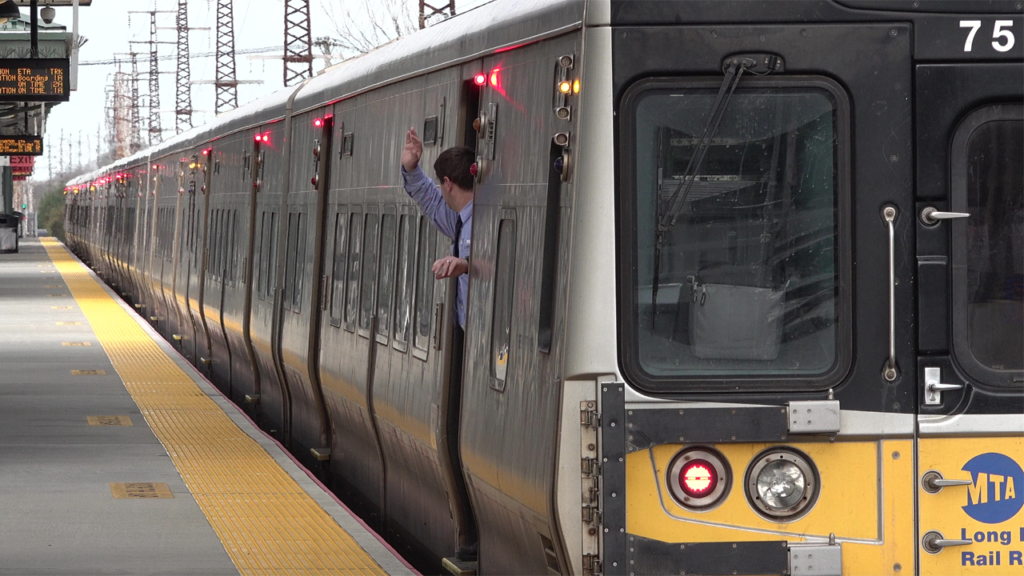
Service on New Jersey Transit is essentially at pre-COVID levels, too, and weekend service on the Main/Bergen Line was enhanced last November. Ridership during historic peak-commuting hours remains weak, while it is recovering more-substantially at other times—especially on weekends.
SEPTA in Philadelphia seems to have recovered better on the local-rail side (subways and trolley lines) than on the regional-rail side, where the lines have not recovered their pre-COVID levels of service. Most lines still run hourly on weekdays with a few extra “peak-hour” trains, but some have two-hour gaps in part of the weekday schedule. On weekends, a number of lines featured hourly service before the virus struck, but that is no longer the case. Every two hours has been the standard for the past two years and remains so, although there are certain parts of the day with hourly trains on the Paoli, Norristown and Trenton lines.
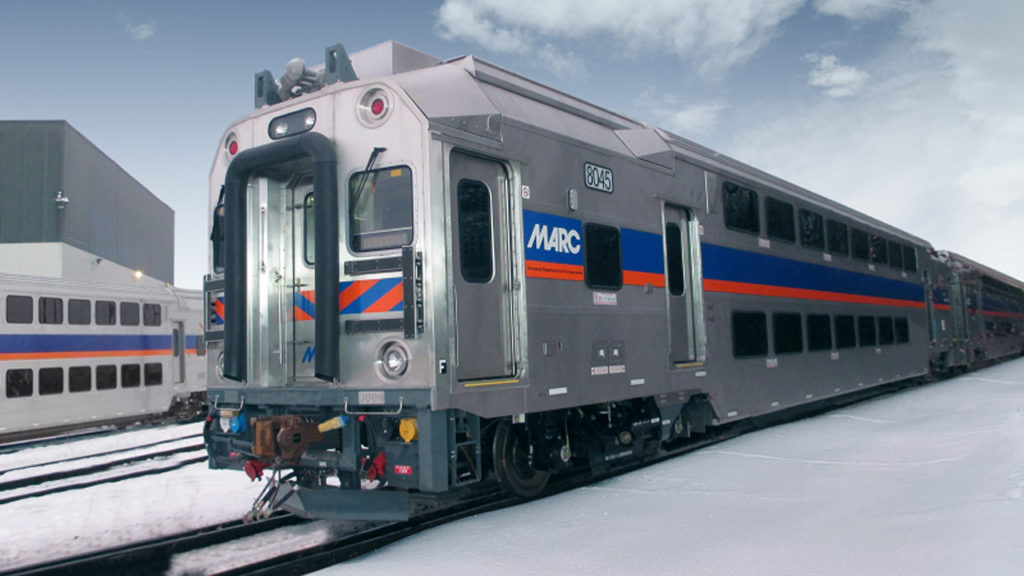
Rail service in Baltimore on the Maryland Transit Administration (MTA) is running at pre-COVID levels on the Metro subway and light-rail lines, and schedules on MARC trains serving Washington, D.C. and Maryland points is back to historic levels. Only the Penn Line operating on the Amtrak Northeast Corridor (NEC) runs trains outside historic “peak-commuting” hours and on weekends.
Metro Rail (Washington Metropolitan Area Transit Authority) in the Washington, D.C., area has recovered from the early shutdowns that hit the system after the virus struck. The current schedule calls for service from 5 a.m. until midnight on weekdays, and is extended until 1 a.m. on Friday nights. Service starts at 7 a.m. on weekends and runs until midnight on Sundays and until 1 a.m. on Saturdays. Virginia Railway Express (VRE) has returned to its old schedules, too, which ran almost exclusively during peak-commuting hours.
South: Not Transit-Rich, But Pre-COVID Service Back
There is not much rail transit in the South, and what there is appears to inhabit islands of transit, like New Orleans, Atlanta and South Florida. Still, rail transit in the region seems to have recovered from the original cuts that the virus brought two years ago.
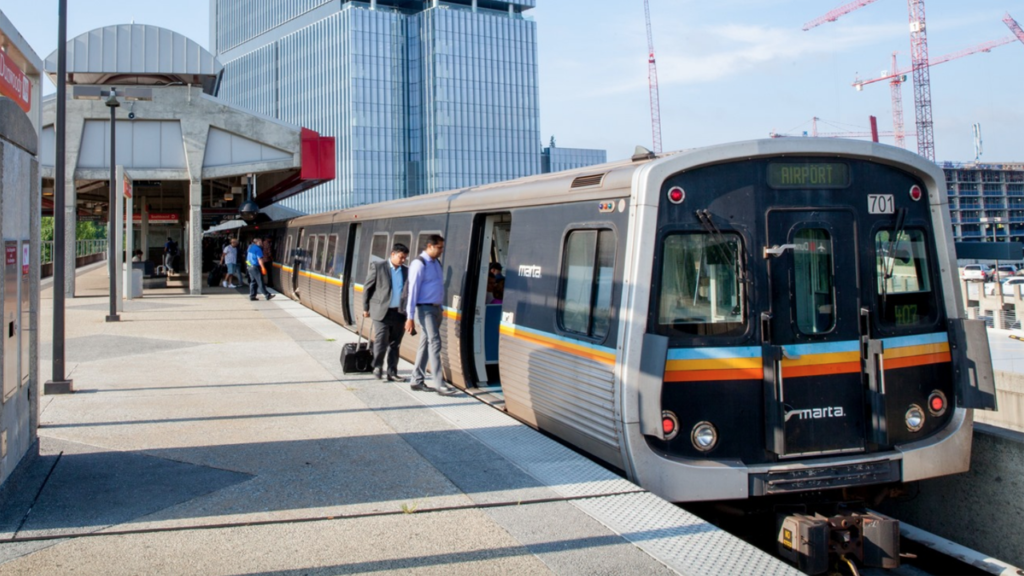
Local light rail in Norfolk, Virginia and Charlotte have returned to pre-COVID service, and the CityLYNX streetcar in that city is operating full service, too. So is MARTA’s rail transit in Atlanta. Rail service in Florida appears to have recovered to pre-COVID levels, too. Those services include Sun Rail in the Orlando area (on weekdays only), Tri-Rail in South Florida, and Metrorail in Miami. Privately operated Brightline trains run seven days a week, usually hourly, with some two-hour gaps and with a “mini-peak” on weekdays.
The New Orleans Regional Transit Authority’s beloved streetcars in the Crescent City are not doing as well as they did in pre-COVID times. The Riverfront Streetcar and most of the Rampart-St. Claude line are out of service; indirect or direct victims, respectively, of a building collapse in October 2019. The other lines are operating, still on 24-hour schedules, but not running as often as before the virus hit.
Trolley service in Memphis is operating at a reduced level, but the reductions began before the virus hit. Elsewhere in Tennessee, Nashville’s limited-service commuter train, the Music City Star, is back on its traditional schedule: two peak-hour trains from Lebanon and another from a short-turn at Mount Juliet. Since the consists are stored at Lebanon, the trains run reverse-direction, too.
The Metro Streetcar, which normally operates in Little Rock and North Little Rock, is currently operating only in North Little Rock, and Rock Region Metro’s website warns that there will be more disruptions through 2024. This has been caused by construction and appears unrelated to COVID.
Texas and Oklahoma: Big Systems Back, While Smaller Line Lacks
Texas is a region all its own, positioned between the South and the West. Rail systems in the state’s big cities have come back well, apparently returning to pre-COVID levels of service. That holds for Houston’s Metro Rail, as well as DART (Dallas Area Regional Transit) light rail the McKinney Avenue Trolley in Dallas, TEXRail in Fort Worth, Trinity Railway Express (TRE) trains between those two cities, and Denton County’s A-Train, which connects with DART. The latter two services do not run on Sundays, but they never did. The same goes for the two OKC Streetcar routes in Oklahoma City, where the Downtown Loop runs six days a week, but the Bricktown Loop runs only on Fridays and Saturdays.
The only place in the region where service has not recovered is on Sun Metro’s El Paso Streetcar, which uses PCC cars that originally ran in that city until service was discontinued in the 1970s. Today, the line has been reduced to a part-time tourist circulator, running only from 4 to 11 on Fridays, Saturdays, and Sundays.
The Midwest: Local Rail Back, But Not All Metra
Even though there are nine other cities (counting Minnesota’s fraternal “Twin Cities” separately) with at least one rail-transit line in the Midwest, Chicago is the hub and contains most of the rail transit in the region, with the Chicago Transit Authority (CTA) and regional rail on Metra and the South Shore Line to Indiana. Spans of service on the CTA’s “L” lines are now at pre-COVID levels.
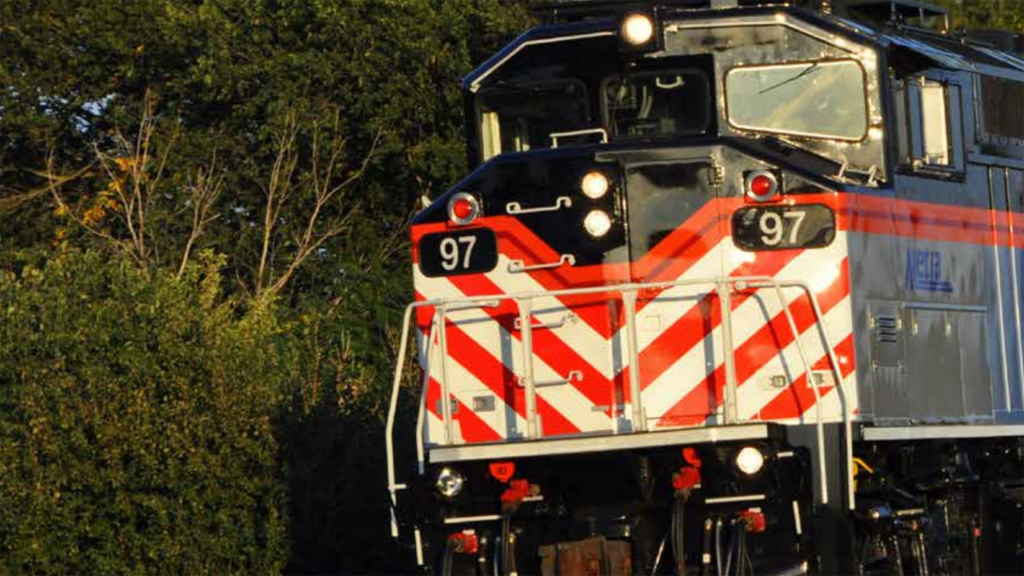
On Metra, one line has the most-robust weekday service: the UP (historically C&NW) North Line to Waukegan (with limited service to Kenosha, Wis.). There is hourly service to Waukegan, with interspersed short-turns at Winnetka, the continuation of an experiment which has made Winnetka the Big Noise in Chicagoland. Weekend trains run at much weaker pre-COVID levels.
Elsewhere, hourly weekday service has returned to the BNSF Line to Aurora (historically Burlington), but the experiment with half-hourly midday short-turn service has been abandoned in favor of more peak-hour “commuter” trains. Saturday service has improved with fewer two-hour gaps. The Metra Electric Line is running pre-COVID service, which includes the Blue Island Branch not running evenings or weekends, and inbound South Chicago service ending by mid-evening. Otherwise, both lines run hourly on Saturdays and only every two hours on Sundays. Service on the UP Northwest Line has returned to pre-COVID levels, at least as far as Crystal Lake. The South Shore Line has also restored pre-COVID schedules, although 11th Street in Michigan City will be closed for construction until sometime in 2024. The former street-running portion of the line on 10th and 11th Streets is gone.
Service on other “full-service” lines, including the Milwaukee District North Line to Fox Lake, Milwaukee District West Line (to Elgin), the Rock Island District line (to Joliet), and the UP West Line to Elburn, has been weakened, with some two-hour gaps between trains on weekdays. Other lines, which did not have robust service before the virus struck, still do not. The Heritage Corridor to Joliet and the North Central service to Antioch run only during peak-commuting hours. Southwest Service (to Orland Park) remains curtailed, with few “off-peak” trains and no more service on Saturdays.
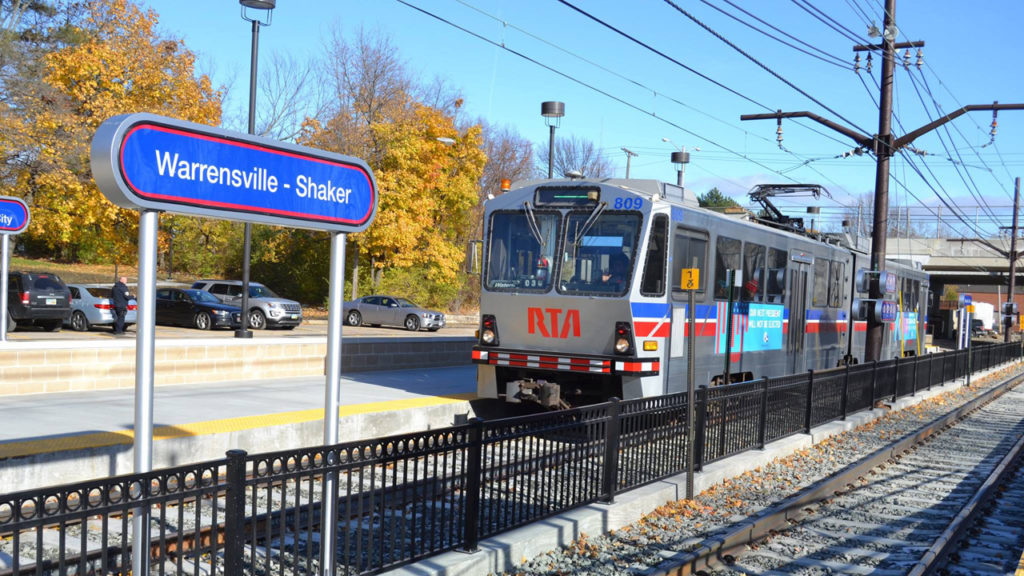
Cleveland RTA’s Red, Blue and Green lines are operating at pre-COVID service levels, but the Waterfront Line remains suspended. The suspension began on Oct. 1, 2020. Elsewhere between the East and Chicago, the Detroit People Mover and the relatively-new streetcar lines in Cincinnati, Detroit and Milwaukee are back, but spans of service are reduced, compared to pre-COVID operations. The Kenosha Electric Streetcar, a downtown circulator that uses historic PCC cars from Toronto, is back to its former service, but it’s limited; running only in the late morning and afternoon.
In Missouri, the KC Streetcar has recently expanded its hours to pre-COVID levels, and the free ride has been a popular attraction. In St. Louis, MetroLink’s light rail lines are running at their previous levels of service again, too. Light rail in Minnesota’s Twin Cities is also running full service.
Southwest and Rockies: Pre-COVID Schedules, Most Times
One area where rail transit has expanded during the past few decades is the Southwest and slightly north of there. Denver keeps building its FasTracks initiative and Valley Metro’s light-rail line in and near Phoenix keeps growing. Denver’s RTD runs all lines, but the service day ends earlier on most lines than during pre-COVID times. Some lines run later on Friday and Saturday nights.
The three TRAX light-rail lines and the S-Line streetcar in Salt Lake City run at pre-COVID headways. Frontrunner trains run between Provo and Ogden through Salt Lake City hourly Monday through Saturday, with a few extra weekday trains, but service also ends earlier than it had in the past. There has never been Sunday service on Frontrunner.
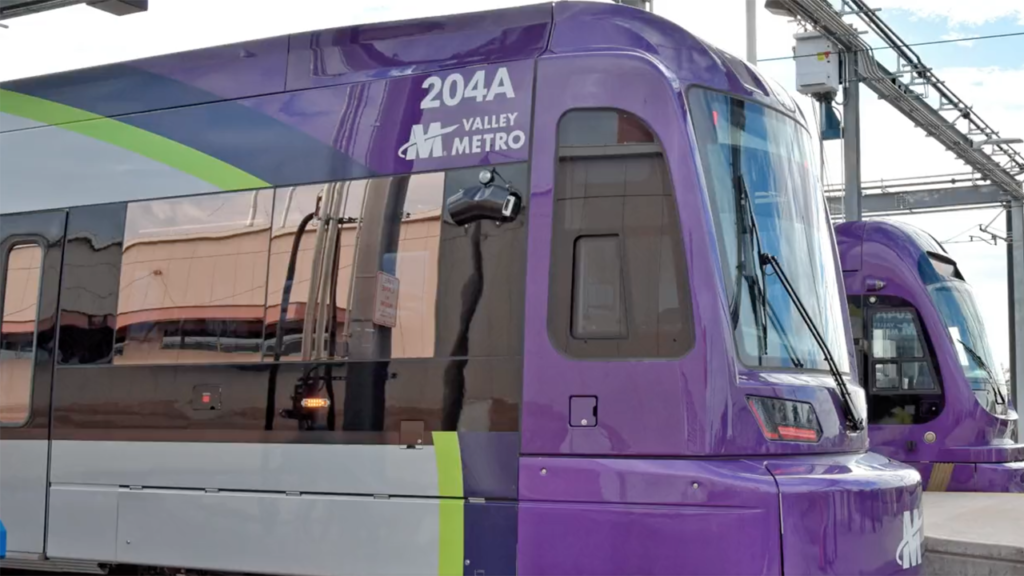
Valley Metro Rail, the light-rail line in Phoenix, Tempe and Mesa, runs a full-service day, but with a slightly-shorter span of service on Sundays. There may be a new development coming soon, though. The Tempe Streetcar has been taking delivery of cars from Brookville and hopes to start service soon; maybe this spring. Further south, the Sun Link Streetcar in Tucson runs as frequently as it did in the past, but service only runs late on Thursday, Friday, and Saturday nights.
The Rail Runner Express in New Mexico was the last commuter railroad to come back after the virus struck, but it now runs its pre-COVID schedule: focused on peak-hour commuting on weekdays and limited on week-ends. It runs between Belen and Santa Fe, through Albuquerque.
West Coast: Most Rail Back, But Muni, Metrolink Lag
California is truly a mixed bag, as far as transit’s recovery is concerned. Service in San Diego is back to its old level, while the same is mostly true for local rail transit in Los Angeles. On the other hand, many Metrolink trains that ran until two years ago are still gone, and Muni in San Francisco still runs a level of service far below its pre-COVID standard.
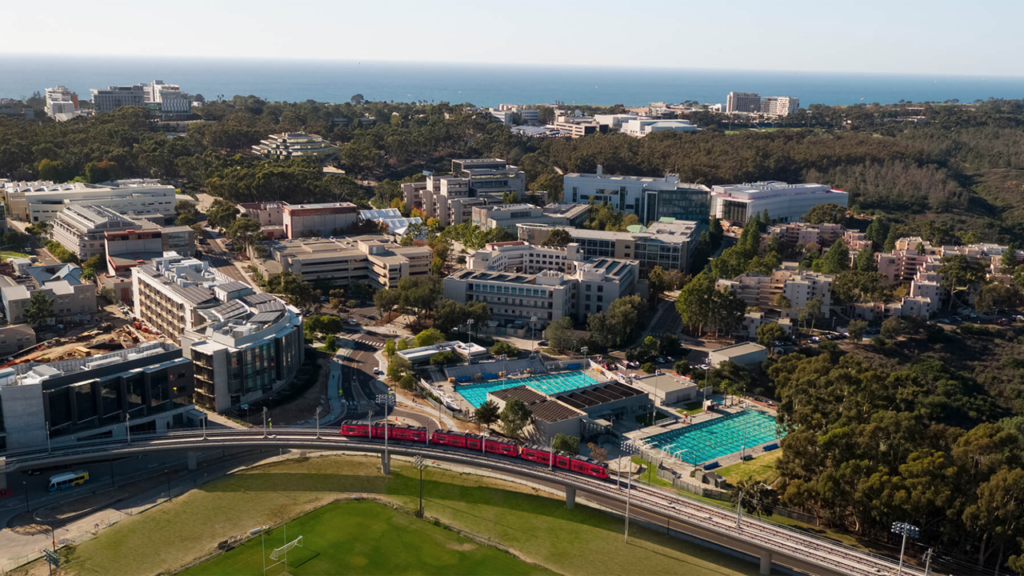
Full service on the San Diego Trolley system is back, and there is even an extension that opened on November 21, 2021. It’s a northward extension of the Blue Line, from its old terminal at Old Town to UTC (University Towne Center, a mall with apartments and a hotel); a 26-minute ride that includes nine new stops. Coaster trains are running between San Diego and Oceanside on the old schedule, and so is Sprinter, a diesel light-rail line between Oceanside and Escondido.
Subway and light rail lines in Los Angeles are back to the pre-COVID level of service, except that late-night service that used to run on Friday and Saturday nights is gone. Some bus routes still run all night, though. The situation is different for Metrolink, the region’s commuter rail system. The description fits, because the Riverside and 91/Perris Valley Lines now have no service outside peak-commuting hours, except for a two-train “mini-peak” on the latter line on weekends. Service outside traditional weekday commuting hours was slashed on all other lines two years ago, and it has not recovered. Weekend service was limited before COVID, and it has not changed.
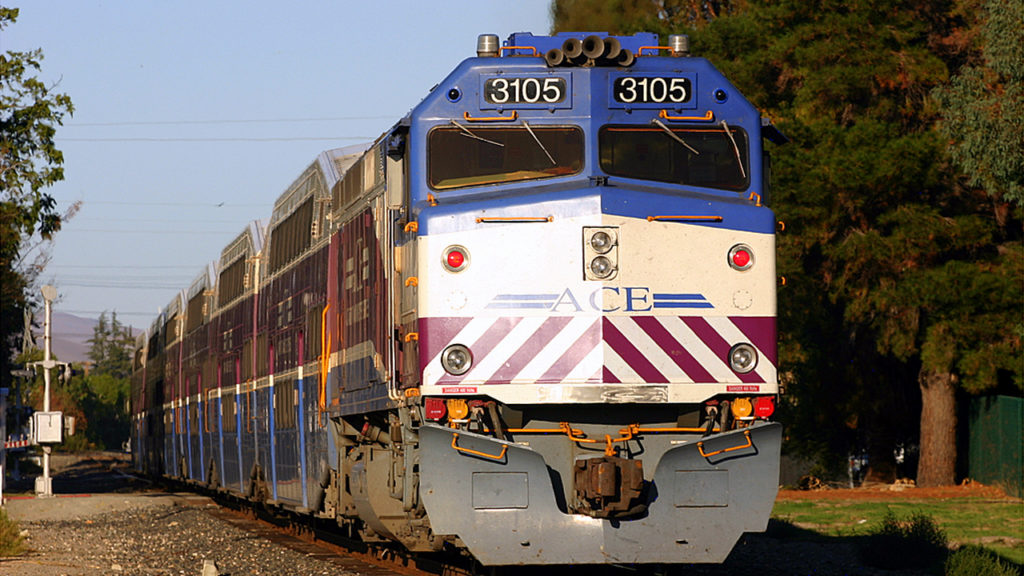
There are similar disparities in Northern California. Valley Regional Transit (VTA), which serves San José and other towns at the proximal end of the Peninsula, operates its three light rail lines on similar schedules to pre-COVID service, except that the service day ends earlier now. At one time, there was service all night. The Altamont Commuter Express (ACE) train is back to its old weekday schedule: four trains from Stockton to San José in the morning, and back in the late afternoon and early evening. There were two Saturday round-trips for awhile, but they are gone. Service on the Blue and Gold lines of the Sacramento Regional Transit (SacRT) light rail lines is similar to the pre-COVID era, but ends earlier. The Green Line, a three-stop line, runs half-hourly on weekdays only.
Closer to San Francisco, the Bay Area Rapid Transit (BART) system has restored service after 9 a.m. and again closes around midnight, every night. Schedules are similar to the pre-COVID service, with five lines operating until 9 p.m. on weekdays and a three-line system after that and on weekends. A new extension opened in 2020: the south end of the Orange Line (and Green Line on weekdays) from Warm Springs/South Fremont to Milpitas and Berryessa. As we recently reported, there are now plans for a further extension through downtown San José to Santa Clara.
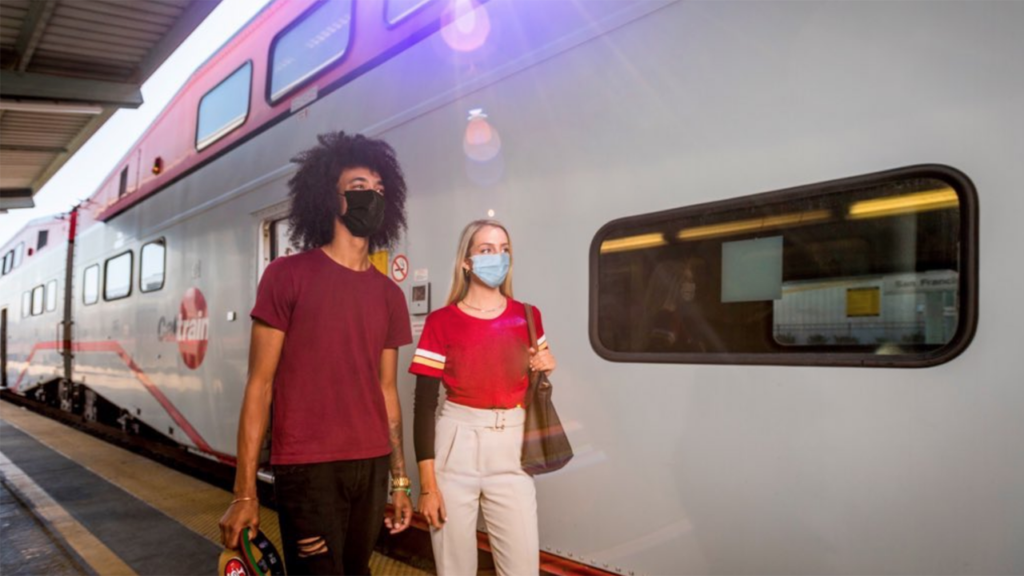
Caltrain has changed its schedules drastically since the virus hit, even getting rid of the “commuting peak” entirely in 2020. It’s back now, and the innovative concept of running two trains an hour throughout the day is gone. “Baby bullet” trains are back during the commuting peak, and “Limited Express” trains run at those times, and hourly during midday. They leave San José only 11 minutes ahead of the local trains, but the schedule from San Francisco is more-balanced. There are still all-stops locals later in the evening. Week-end trains continue to run essentially once an hour.
It appears that no large transit system in the country took as hard a hit from the virus as Muni in San Francisco. Light rail, historic streetcars, and the unique cable cars had been eliminated completely, and there were only 17 bus routes still running after the initial cuts. Now, 42 routes are running, 24 are still suspended, two were shortened, and one was rerouted. Things are still not much better on the rail side. The E Embarcadero route is suspended, while the F Market & Wharves route still runs with historic streetcars, but only from 7 a.m. until 10 p.m. The J Church, M Ocean View, and N Judah are running. The K Ingleside and T Third Street have been combined. The L Taraval has been replaced by a bus route, and buses run on some of the other routes early in the morning and in the evening after 9:00. These lines run until midnight, which was customary until the virus hit. For late-night service, there is a smaller network of “owl” buses. The three cable car lines are running again, but service ends earlier than it did under the pre-COVID schedule.
For the most part, rail transit in Portland has recovered. The five MAX light rail lines and the two lines on the Portland Streetcar are running full service. Westside Express Service (WES) commuter rail still operates only during peak-commuting periods, every 45 minutes during those times. The line used to operate every 30 minutes until COVID struck. WES is the only commuter rail line in the country that does not go downtown. It runs between the Beaverton Transit Center, west of town on two light-rail lines, to Wilsonville, a place south of the city where local buses run to Salem, the state capital.
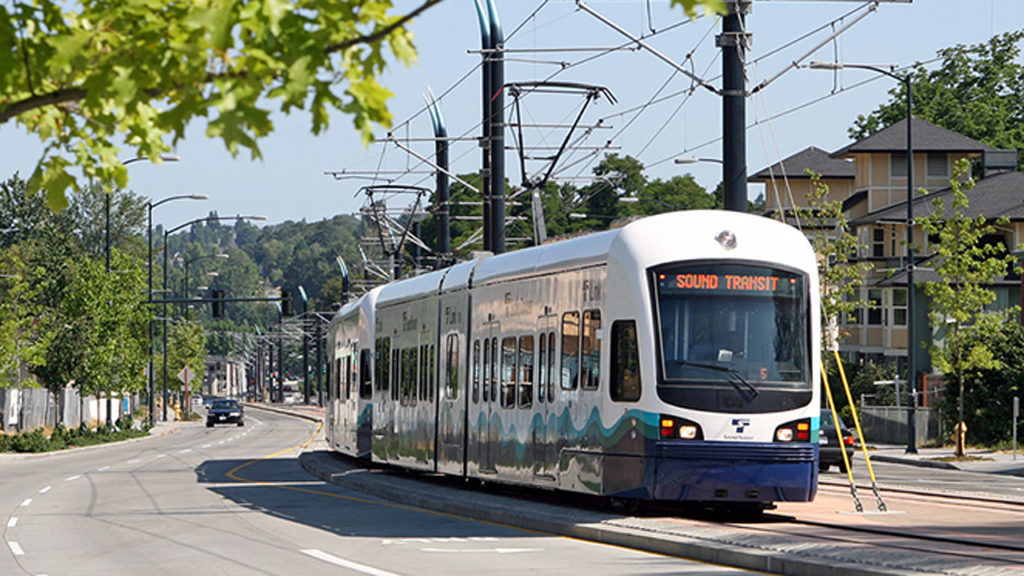
Sound Transit’s Link light rail in Seattle runs almost as frequently as it did in pre-COVID times, and the span of service is about the same as it was, except that it shuts down earlier on Sundays now. The South Lake Union and First Hill Lines, which are not connected, run different operating hours, as they did before the virus struck. Both run short days on Sundays, and the First Hill line runs a longer service span. Sounder commuter trains have not done as well. There are now only two trains inbound from Everett in the morning and back in the late afternoon, although the two endpoints are served by a busy bus route. South to Tacoma and Lakewood, trains still run only during peak-hours, and some have been eliminated. There are a few that turn at Tacoma, including one running reverse-peak. Tacoma link, a short streetcar line in downtown Tacoma, is running as it did before, but its hours are limited, especially on Sundays (10 to 6). There are plans to extend that line someday.
Canada: Old Schedules Back
There is not much rail transit in Canada. There are four systems with some light rail, and three major systems with local rail and regional rail service; genuine “commuter rail” in Vancouver. Toronto and Montreal are the other two cities with regional rail, which has some trains outside commuting peaks.
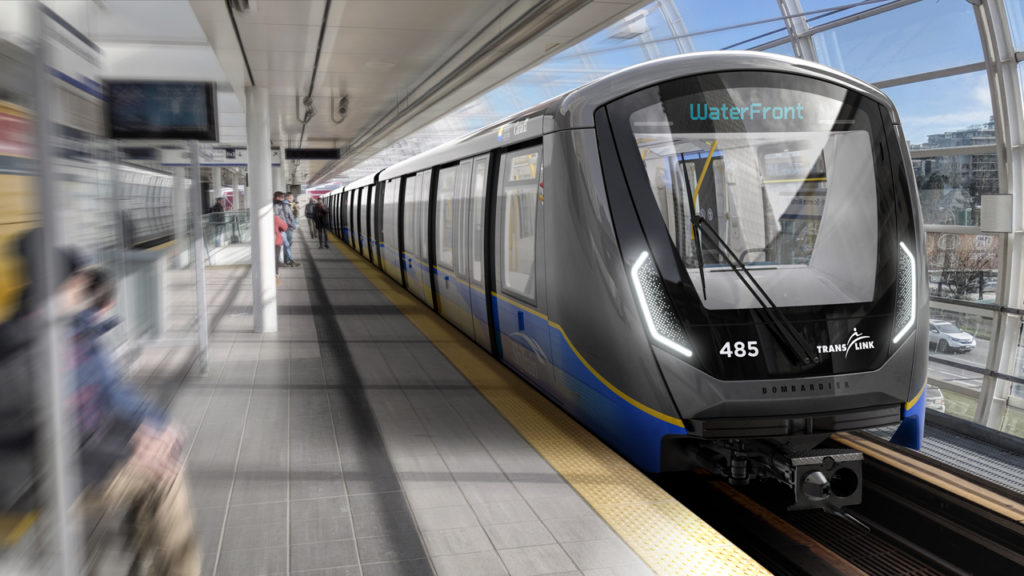
Vancouver’s Sky Train is running schedules similar to pre-COVID levels. West Coast Express, the city’s commuter train line, runs four trains to the city in the morning, returning after the business day. Before the virus struck, there were five such trains. The two cities in western Canada with light rail are in Alberta: Calgary and Edmonton. Both run full-service schedules.
Ion Transit in Kitchener and Waterloo, Ontario only began operations on June 21, 2019—less than 9 months before the virus struck—and it is running a full schedule today. OC Transpo in Ottawa opened its Confederation line in 2019, too, and also runs full service on it. That city’s O-Train Line 2 (the Trillium Line) is the original O-Train line, and is currently closed for construction.
There are construction projects in Toronto that are changing streetcar operations and substituting buses in some places, but subways and streetcars are essentially back to pre-COVID schedules on other lines. The 1980s-vintage non-standard Scarborough RT line is slated be replaced by a more-conventional operation, but that change has nothing to do with the virus. Except for the now-discontinued single-round-trip Niagara Falls commuter train, GO Transit schedules are mostly back to pre-COVID levels.
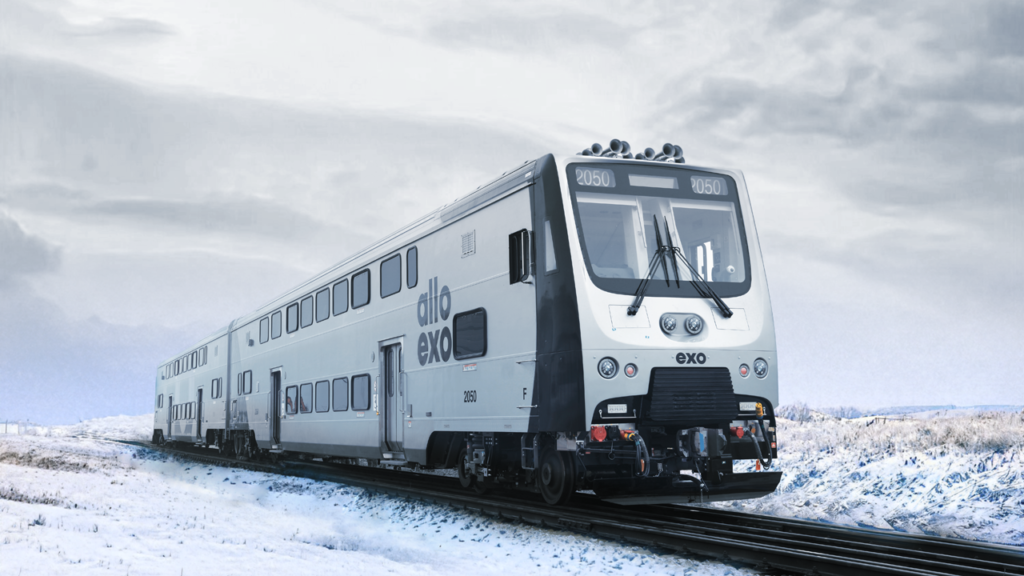
So are schedules on Montreal subways and Exo, the city’s regional railroad. There is one exception: the Deux Montangue line has been discontinued, as construction continues for the RER line that will take over the space where it used to run. The city’s subways are running as they did before the virus struck.
Looking Toward the Future
Levels of transit service determine how much mobility riders have, so access to service is the riders’ immediate concern. While this report focused on that concern, there will be other difficulties coming in the long run, especially funding problems. With fuel prices for vehicles skyrocketing, largely as a result of Vladimir Putin’s war against Ukraine, some motorists are already saying that transit should be eliminated, or at least severely curtailed. These escalating fuel costs will squeeze transit agencies, too.
The COVID relief legislation from the past two years has kept transit going in many places, especially with its provisions that allowed federal operating support for transit. That appears to be a temporary exception to long-standing policy, though, so it is unclear how transit agencies will fare in the future. For the moment, most local transit providers are running their local rail service at or near pre-COVID levels. If that does not change over time, we will not need to pursue another detailed snapshot like this one in the future. Anything can happen though, and, if the situation changes, we will report that to you.
The commuter rail situation is still in flux, as the big question becomes how many employees will again commute to their offices five days a week when the dust settles. We will continue to report on the possible answers to that question. We will also have a report on how intercity rail is recovering from the virus. Our report about the current status of Amtrak and VIA Rail in Canada is coming soon. Stay tuned for it.



